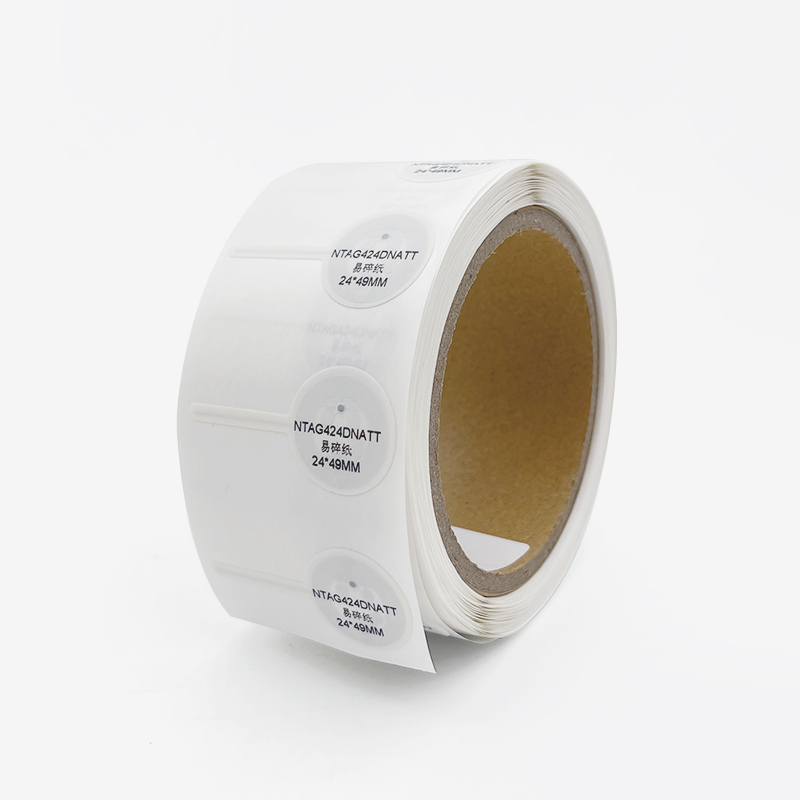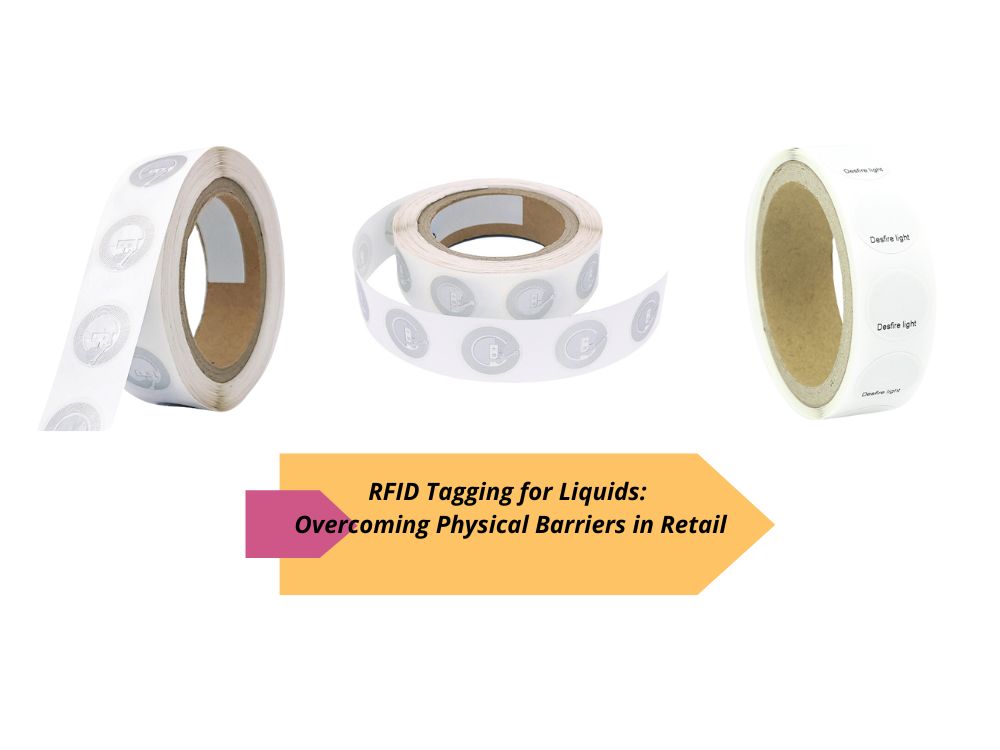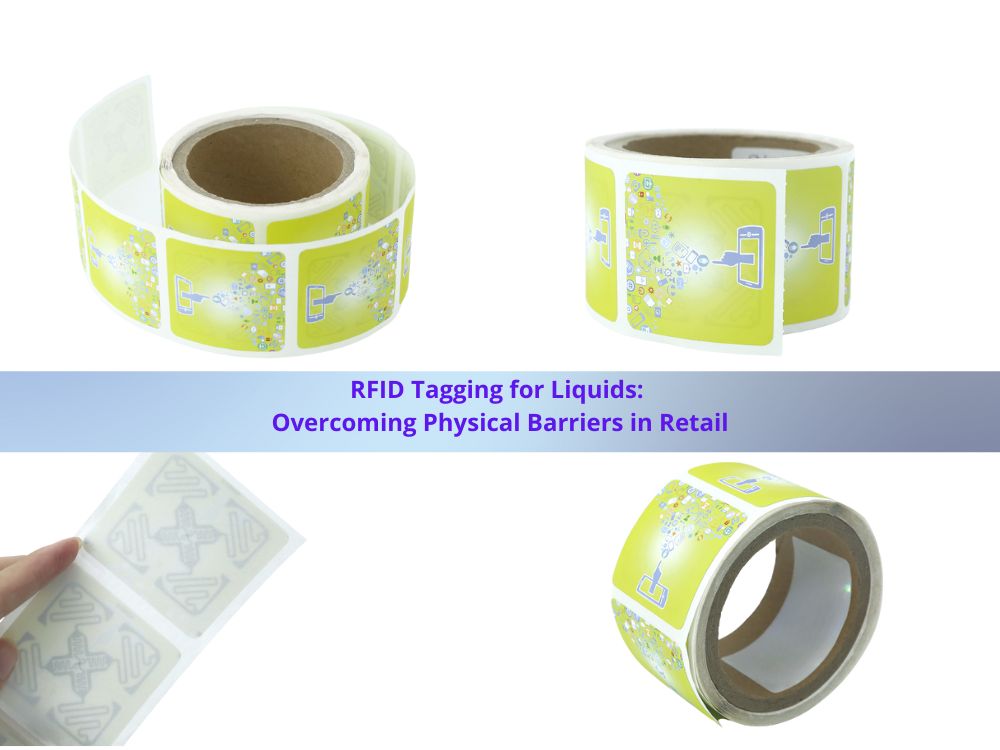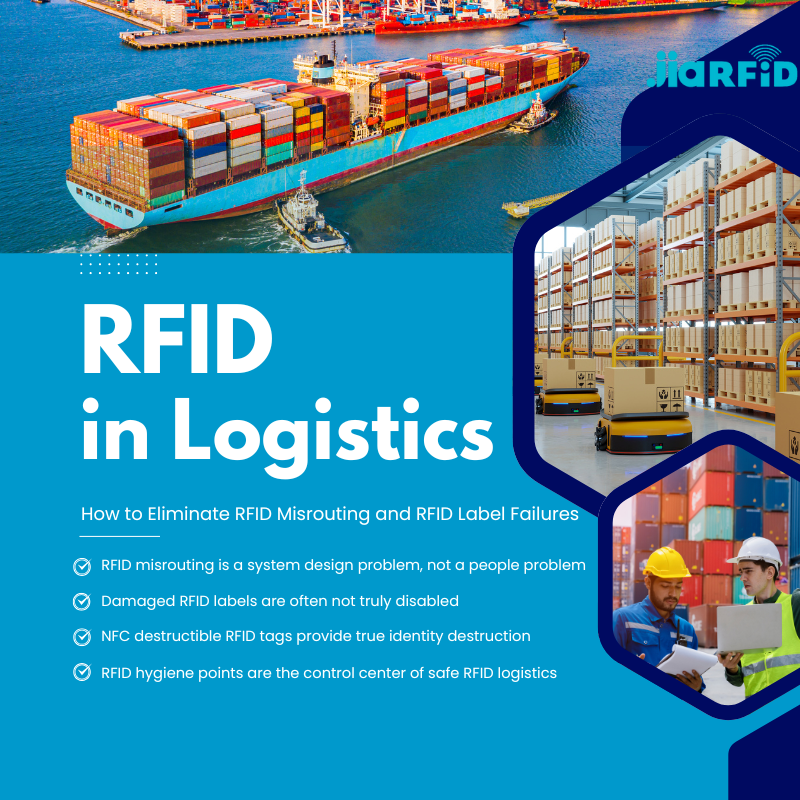
RFID Tagging for Liquids: Overcoming Physical Barriers in Retail
Table of Contents
Summary
However, for companies dealing with liquid products, applying RFID tags presents a distinct set of challenges. The reflective and absorptive nature of liquids can interfere with RF transmissions, making standard RFID tagging methods less effective. To overcome these obstacles, Goodwin Inc., in partnership with Phenix Label, has pioneered several RFID tagging techniques that ensure compliance with retailer mandates while maintaining product integrity.

Challenges of RFID Tagging on Liquid Products
Understanding the Physics of Liquids and RF Interference
RFID technology relies on radio waves to transmit data between tags and readers. However, liquids can absorb or reflect these waves, leading to poor tag readability. This issue is particularly pronounced in products such as household cleaners and automotive fluids, where the liquid content can disrupt the transmission of RF signals. As a result, companies need specialized RFID solutions to ensure that their products meet retailer performance standards.
Challenges and Solutions for RFID Tagging on Liquid Products
Challenge | Solution | Benefit |
RF Interference by Liquids | Specialized RFID tags with separation | Ensures reliable tag readability |
Complex Labeling Requirements | Extended flag and hang tags | Maintains label integrity and functionality |
Precise Fill Levels | Tagging above the liquid fill line | Prevents RF interference, ensures compliance |
Innovative RFID Solutions by Goodin and Phenix Label
Creating New Labels and Application Methods
Goodin Inc., with a century of experience in bottling services, has adapted to the RFID mandates by developing innovative labeling solutions in collaboration with Phenix Label. The partnership has resulted in the creation of recyclable UHF RFID tags that are specifically designed for liquid products. These tags have been rigorously tested and approved by Auburn University’s RFID Lab, ensuring they meet the stringent performance requirements set by retailers like Walmart.
Peel Label with RFID Separation
One of the most effective methods developed by Goodin and Phenix is the peel label with separation from the bottle. This label design incorporates a UHF RFID chip and antenna within the inner layer of the label, which is then perforated and attached to the front of the packaging. The separation between the RFID antenna and the liquid inside the container ensures that RF signals are transmitted without interference.
Tagging Above the Fill Line: A Precise Solution
Precision in RFID Tag Placement
Another innovative approach employed by Goodin involves placing the RFID tag above the liquid fill line of the product. This method requires extremely precise filling techniques to ensure that the liquid does not come into contact with the tag. Goodin, known for its high-value liquid products, has engineered its processes to maintain consistent fill levels, making this method both feasible and effective.
Future Possibilities: RFID Caps
Exploring New Frontiers in RFID Tagging
Looking ahead, Goodin and Phenix are exploring the possibility of integrating RFID tags into bottle caps. This approach would involve attaching a small RFID antenna and chip to the top of the cap, ensuring that the tag remains unaffected by the liquid content. While this method has not yet received approval from Auburn’s RFID Lab, it represents a promising future direction for RFID tagging in liquid products.
Ensuring Quality and Compliance with RFID Readers
Rigorous Testing for Tag Readability
Goodin takes a meticulous approach to quality control by testing RFID labels with handheld readers before they are applied to products. This ensures that the tags are readable and functional before the products are shipped to retailers. Additionally, post-application testing is conducted to confirm that the tags remain operational after being affixed to the product. This rigorous testing process helps prevent any potential issues in the supply chain, ensuring that retailers can reliably track and manage their inventory.
Working with Retail Giants like Walmart
As Walmart continues to drive the adoption of RFID technology, other retailers are expected to follow suit. For now, many brands are only applying RFID tags to products destined for Walmart, while using standard labels for other retailers. However, the growing demand for RFID tagging across the retail industry highlights the importance of staying ahead of these mandates. Goodin’s expertise in RFID labeling for liquid products positions the company as a leader in this evolving landscape.

Conclusion
RFID tagging for liquid products presents unique challenges due to the physical properties of liquids and their impact on RF signals. However, through innovative solutions and strategic partnerships, companies like Goodin Inc. are overcoming these challenges and setting new standards for RFID integration in the liquid product industry. As the demand for RFID technology continues to grow, these advancements will play a crucial role in ensuring compliance, improving efficiency, and enhancing the overall retail experience.
Comments
Hot Products

RFID in Logistics: How to Eliminate RFID Misrouting and RFID Label Failures
RFID in logistics is more than just a tool to speed up processes. It has become a key part of how modern supply chains operate.

What Is RFID Waste Management
Imagine a city where every trash bin speaks — not literally — but through a tiny chip that tells the system when it’s full, when it’s emptied, and where it went. That’s what RFID waste management is doing today.

What are Bolt Seals and their Applications? | Complete Guide
In global trade and logistics, bolt seals play a crucial role in ensuring cargo security and compliance. These small but powerful devices are designed to lock shipping containers, trailers, and cargo doors with a tamper-evident mechanism.

What is an RFID Card Protector? Benefits, Use Cases, and Buying Guide
RFID technology (Radio Frequency Identification) is everywhere: in your credit cards, ID badges, transit passes, hotel room keys, and more. It offers speed and convenience, but it also opens the door to a new kind of digital theft called “skimming.” That’s where an RFID card protector comes in.

RFID Wristbands for Events: Bulk Buying Guide for Organizers
RFID wristbands for events are becoming the go-to solution for organizers who need faster entry, fraud prevention, and cashless payments at concerts, festivals, and sports venues. Unlike paper tickets or QR codes, these smart wristbands use embedded chips to streamline access, secure transactions, and improve the guest experience.

How RFID Tag on Windscreen Improves Vehicle Access Control and Toll Systems
In today’s fast-paced world, vehicle identification needs to be quick, secure, and contactless. An RFID Tag on the Windscreen provides exactly that — a reliable way to manage toll collection, parking, and gated access without stopping vehicles.
Tags
RELATED BLOGS

RFID in Logistics: How to Eliminate RFID Misrouting and RFID Label Failures
RFID in logistics is more than just a tool to speed up processes. It has become a key part of how modern supply chains operate.

What Is RFID Waste Management
Imagine a city where every trash bin speaks — not literally — but through a tiny chip that tells the system when it’s full, when it’s emptied, and where it went. That’s what RFID waste management is doing today.

What are Bolt Seals and their Applications? | Complete Guide
In global trade and logistics, bolt seals play a crucial role in ensuring cargo security and compliance. These small but powerful devices are designed to lock shipping containers, trailers, and cargo doors with a tamper-evident mechanism.




